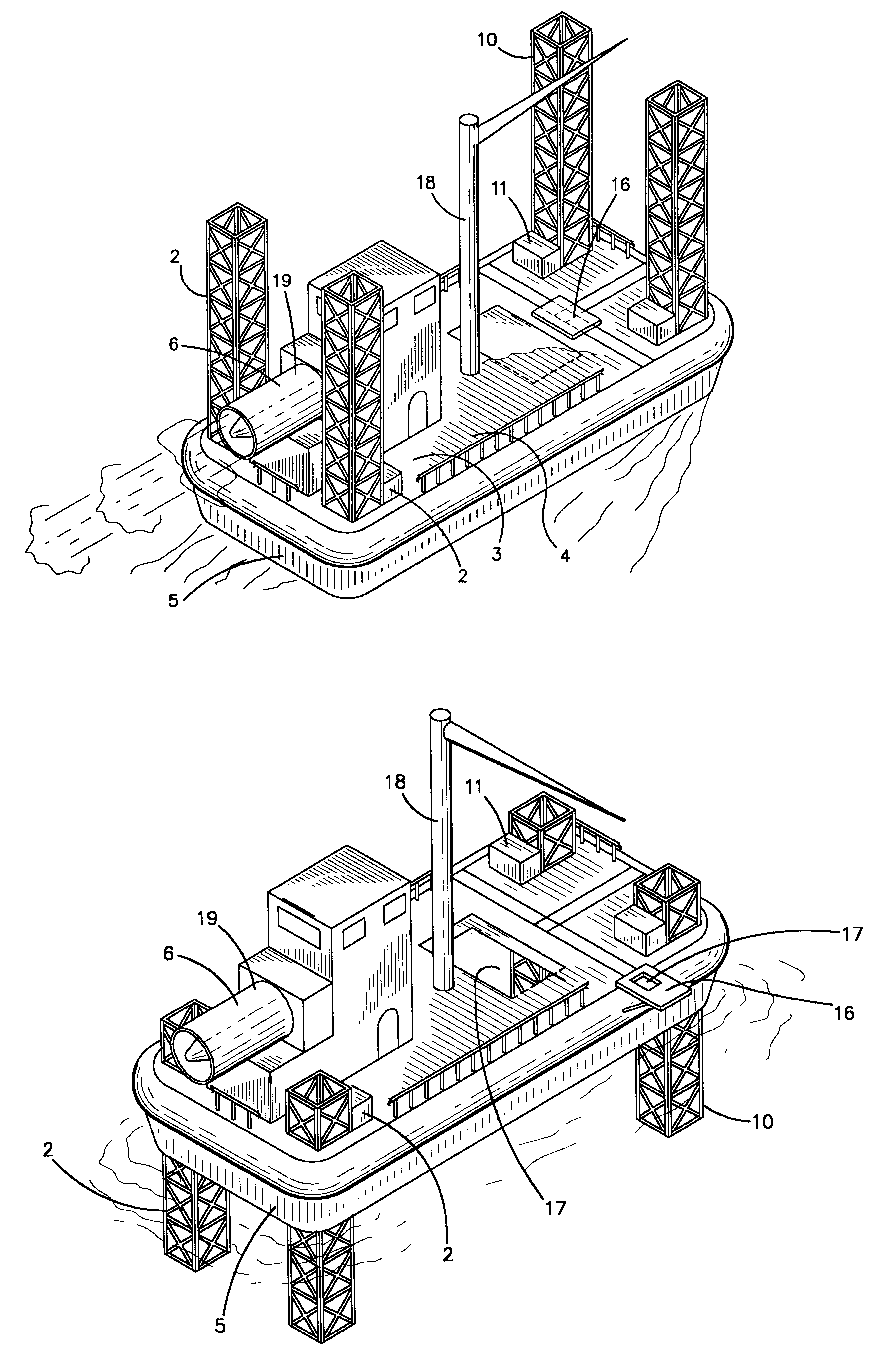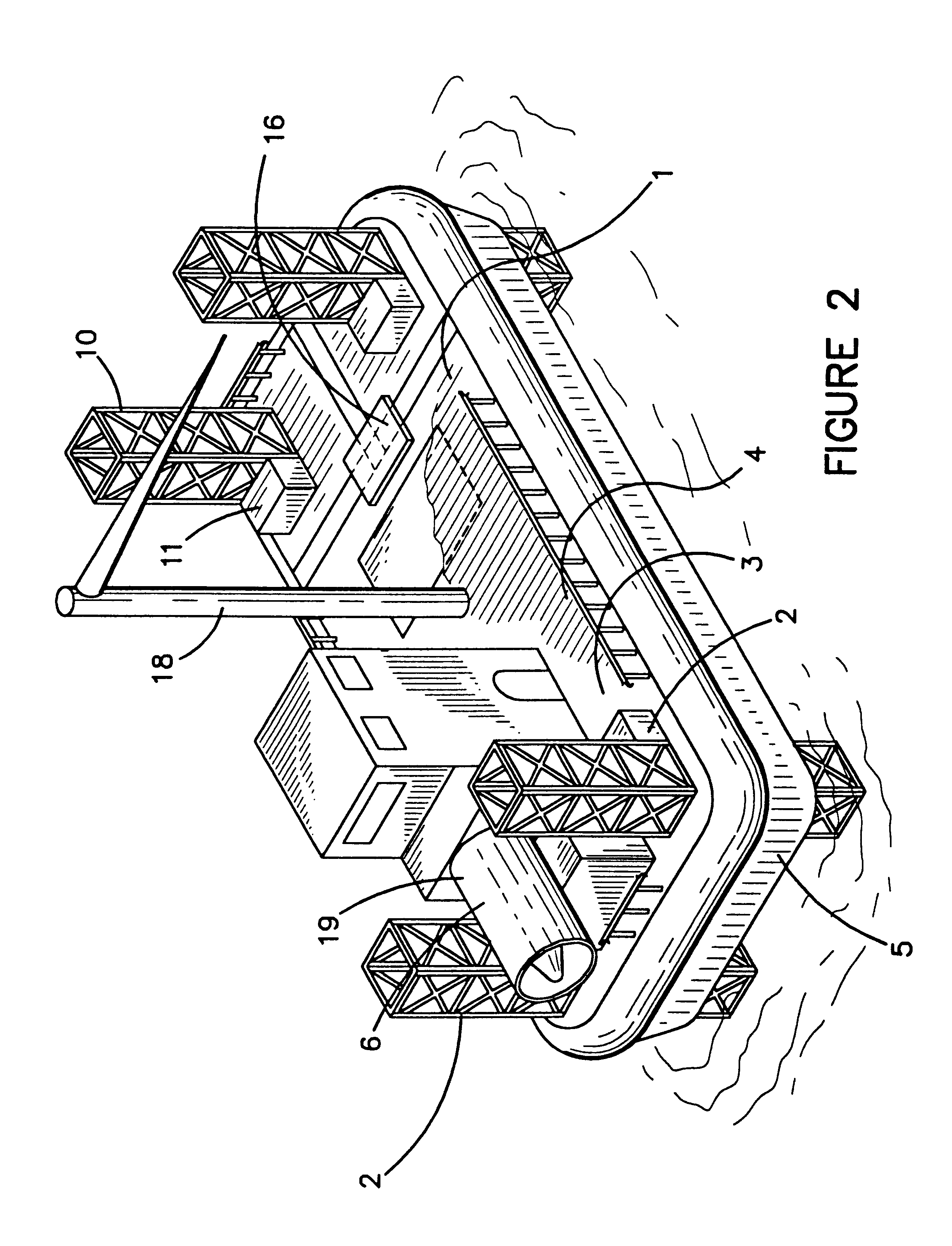Hovercraft work platform
a technology of work platforms and hovercrafts, applied in floating buildings, special-purpose vessels, transportation and packaging, etc., can solve the problems of habitat loss, increased salinity, and creatures that live in marshes, and achieve the effect of killing the vegetation that thrives
- Summary
- Abstract
- Description
- Claims
- Application Information
AI Technical Summary
Benefits of technology
Problems solved by technology
Method used
Image
Examples
Embodiment Construction
The invention comprises a hovercraft 1 combined with a jack-up structure 2. Hovercraft 1 will have a hull and a deck 3 which may serve as a work platform 4 from which oil exploration and production operations can be conducted. Below deck 3 is a skirt 5 which forms a perimeter around hovercraft 1. Skirt 5 may be a bag or tube skirt, a segmented or finger skirt, a jupe or cell skirt, or other such skirt designs as may prove convenient, and will preferably be made of a heavy rubberized fabric. Air is pumped into skirt 5 to create an air cushion on which hovercraft 1 floats. Air source 6 will typically comprise one or more jet engines, diesel turbines, gas turbines or other such conventional engines. A portion of the air from air source 6 will be directed into skirt 5 which will inflate the skirt components, creating a boundary for the air cushion. A second and typically greater portion of the air from air source 6 will be directed into the space below deck 3 defined by skirt 5. This ai...
PUM
 Login to View More
Login to View More Abstract
Description
Claims
Application Information
 Login to View More
Login to View More - R&D
- Intellectual Property
- Life Sciences
- Materials
- Tech Scout
- Unparalleled Data Quality
- Higher Quality Content
- 60% Fewer Hallucinations
Browse by: Latest US Patents, China's latest patents, Technical Efficacy Thesaurus, Application Domain, Technology Topic, Popular Technical Reports.
© 2025 PatSnap. All rights reserved.Legal|Privacy policy|Modern Slavery Act Transparency Statement|Sitemap|About US| Contact US: help@patsnap.com



